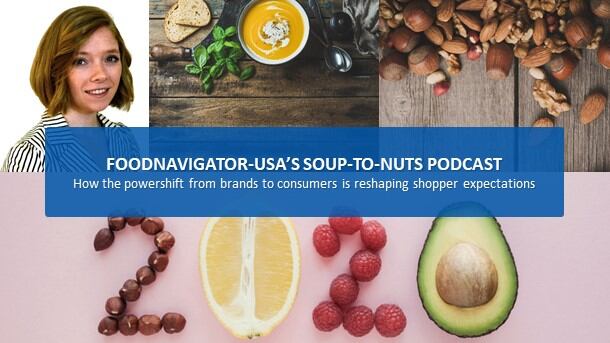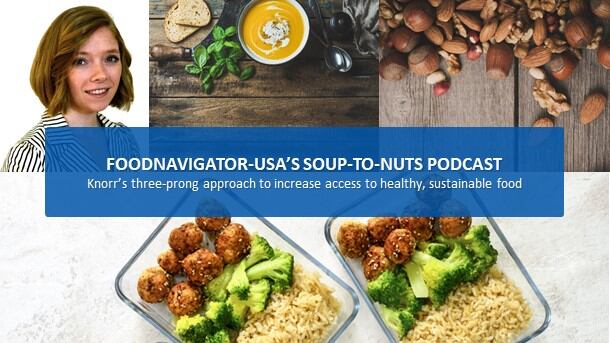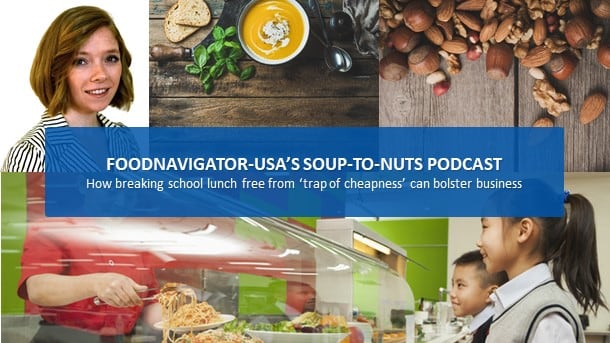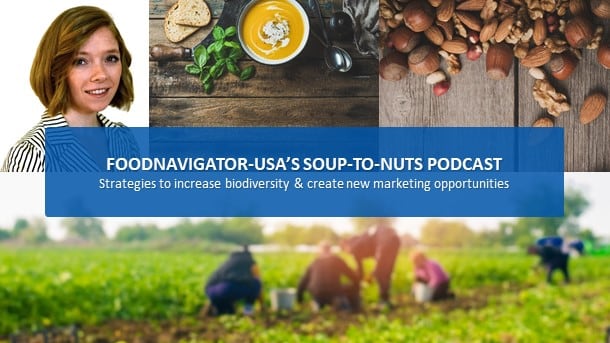At the turn of the century, big food and beverage brands sat comfortably in control of how consumers saw their products, thanks to predominately one-way marketing efforts. But, according to Linda Eatherton, a partner and managing director of global food and beverage at the communications consultancy Ketchum, this changed in the early 2000s as access to the Internet and the emergence of social media revealed an unfiltered view of brands that ultimately led to a powershift from companies to consumers.
The resulting frustration and fear on both sides inspired Ketchum to undertake a massive research project – coined Food 2020: Consumer as CEO – that would span more than a decade and ultimately provide a roadmap for companies to reconnect with shoppers through 2020 and beyond.
In this episode of FoodNavigator-USA’s Soup-To-Nuts podcast, Eatherton shares insights from this research, including how consumer ‘Food eVangelists’ emerged and how their competing influence with commercial messaging continues to shape other shoppers’ interpretation and expectations of brands. She also looks forward at how this research and mega-trends continue to shape the shopping preferences of Generation Z.
[Editor’s note: Never miss another episode of FoodNavigator-USA’s Soup-To-Nuts podcast – subscribe on iTunes today.]
Learning from the past to predict the future
Eatherton acknowledges the million-dollar question posed to communication consultants, like those at Ketchum, always is what will the future hold? What types of products will pique consumers’ interest in the coming years? How will their values influence their purchase decisions? What messages will inspire them and what ones will turn them off?
But, she astutely added that the answers, and trends in general, do not evolve in isolation. Rather, they “a composite of insights gleaned from what is happening today; fueled by the outcomes of the past and propelled by the promises of what lies ahead.”
Which is exactly why, she said, Ketchum’s Global Food & Beverage Sector and Ketchum Analytics undertook researching Food 2020: Consumer as CEO.
“Food 2020 was really born out of a need to find a way to first understand what was all the turmoil about back in the early 2000s. Food was under a great deal of pressure and frankly, challenged. And we didn’t quite, at the moment in time, understand who or what was driving the turmoil and looking to the year 2020 we didn’t have any kind of clarity on whether that turmoil would continue,” she explained.
The research revealed that the way companies had communicated with consumers for generations was “suddenly … all circumspect,” and was being picked apart and challenged by the consumer who for the first time had unfiltered access online to other shoppers’ experiences, Eatherton said.
She explained that much of the disconnect between what brands were saying and what consumers were hearing came from social media and a small, but highly influential group of outspoken consumers that Ketchum dubbed ‘Food eVangelists.’
This group was using social media as “their personal megaphone, not only to broadcast their unhappiness or their lack of confidence in the food industry, but they were acquiring many, many followers along the way,” which resulted in food companies facing fires on a near daily basis, Eatherton said.
In subsequent iterations of Food 2020, Ketchum looked for specific consumer concerns that companies could address in an attempt to find common ground between these influencers and brands, Eatherton said.
Rebuilding consumer trust
Unfortunately for established brands, Ketchum’s research revealed that most of consumers’ disenchantment with the food industry was actually focused on so-called ‘big food,’ and the fear that consumers’ values were being trampled in the rush to boost profits and expand margins.
“Now as our major food industry leaders look closely at the broken trust between consumers and the marketplace, I think we’re beginning to see a resurgence of brands as trust marks. Brands that stand for something more than great flavor or convenience. They’re brands that deliver on promise,” and bring a sense of shared values, Eatherton said.
Demand for personalization
Another key discovery that Ketchum’s research revealed was consumer disenchantment with being one of millions, rather than one in a million. This disconnect between traditional marketing and modern consumer demands led to the still ongoing development of personalized nutrition, which Eatherton predicts will continue to gain momentum in the coming decade.
“Early research showed us that values were extraordinarily important, but what we also quickly determined was it wasn’t one or two different types of values. It was a whole laundry list of criteria that established individuals' sense of values,” and shoppers increasingly wanted to see products tailored to their needs and values, she explained.
The problem, however, is how can a company mass market personalized products?
Eatherton believes that technology holds the key and will help CPG manufacturers and restaurants tag products so that consumers can easily filter searchers for their specific needs.
Gen Z views brands as partners, not adversaries
The impact of the shifting power-balance from brands to consumers is perhaps most notable among today’s youngest shoppers, who Eatherton says are more likely to view their relationship with brands and corporations as a partnership compared to their older counterparts who are more likely to view the relationship as potentially adversarial.
“Gen Z is the most interesting of all the different food consumer sectors that we’ve ever looked at. They are dynamic and open and curious. But they’re also restless and they want answers. They want information upfront,” Eatherton explained.
Brands that provide that transparency will be rewarded by the generation’s ease with experimentation and acceptance of new innovations and technologies used to produce food, she said.
“This Gen Z audience is going to be extremely powerful in building our successes and our failures,” and they want to share in those successes and failures in a way that previous generations do not, she said.
As Gen Z continues to join the conversation between older consumers and companies, Eatherton predicts the level of importance placed on different trends will continue to evolve as will the level of trust all shoppers place in businesses overall.
To learn more about how this will play out in the next 10 years, tune in for next week’s installment of FoodNavigator-USA’s Soup-to-Nuts Podcast in which Eatherton shares details on what the consumers of tomorrow will want and how companies likely will meet those demands for long-term success.




